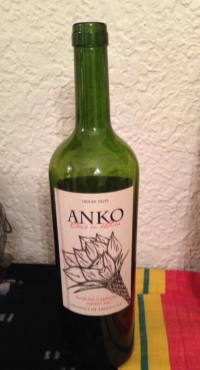Francis Mallman, Helen Oyeyemi, and the Anko winemakers of Salta
Like every great chef, Francis Mallman’s a born rule breaker. Trained in Paris and New York, he specialized in French haute cuisine for many years, until he abandoned it for the homey woodfire cooking of his childhood in Patagonia.
Cecil and I ate at his restaurant 1884 in Mendoza in 2012, one of my favorite restaurant meals ever.
So when I heard Mallman was coming to town last year, I got us tickets for the event at Cooks of Crocus Hill in Saint Paul. A 3-course dinner from his latest book Mallman on Fire
After we met Mallman--an approachable and quirky man in his 50s--we went upstairs to dinner.
Three glasses of wine sat at each place setting: an Albariño, a Sauvignon Blanc, and a Tannat, all from Bodega Garzón, in Uruguay. But when someone asked, “Which wine should we pair with each course?” Mallman responded, “Oh, I don’t believe in pairing rules.”
Of course not. His talk that evening had been about how breaking rules led to discovering his life’s work. About how we need to lose our fears about the world, starting with our fear of the elements. (We are supposed to picnic outdoors in the winter in Minnesota . . . )
The meal was amazing, by the way. I still think about. Here are my personal pairings:
- Sauvignon Blanc with grilled pears wrapped in Iberico ham appetizer, because the acidic wine was perfect with the creamy and smoky flavors of the food.
- Tannat--an Uruguayan grape that’s like a slightly more tannic Malbec--with roasted leg of porkwrapped in rosemary with orange, black pepper and rosemary salmuera. I love dense red wines with meat.
- Albariño with dulce de leche ice cream with charred bananas. The Bodega Garzón Albariño is light and crisp. A strangely good combo.
OYEYEMI
And this brings me to another rule breaker: Helen Oyemi, author of the brilliant novel Boy, Snow, Bird. I just discovered Oyeyemi’s work, and she has quickly become one of my favorite authors.
The Plot: An extended play on the Snow White tale, Boy, Snow, Bird starts on the lower east side of Manhattan in the 1930s. Boy--the novel’s female narrator-- tells the story of her childhood with an evil rat catcher. She runs away from home and ends up in the town of Flax Hill, Massachusetts: a dreamy, fairy tale village of old-world artisans. Boy eventually marries a jewelry maker, a widower with a young daughter named Snow.
After Boy gives birth to a daughter named Bird, the novel suddenly becomes very real. The narration jumps in time and shifts from Boy to Bird, now a smart-ass adolescent. The town has previously seemed isolated from the world, but now we’re now smack in the middle of U.S. race relations in the 1960s, as the family comes to grips with racial hatred within its ranks. Boy returns to narrate the end of the novel, and there’s a bizarre and incredible plot twist.
This novel breaks so many writing rules. Among them:
- The tone is inconsistent.
- So is the style. Sometimes it’s magically real, sometimes not.
- It deals with the issue of race in ways that are often didactic.
- It introduces new characters and concepts at the end.
And yet it all works.
Oyeyemi trusts herself. She leads with her narrators' voices—Boy is sarcastic, scary, and yet adorable. Bird is a smart and appealing teenager. And the Snow White tale gives the novel a deep structure that seems to appear and disappear like a face in the mirror.
ANKO
A toast and tasting notes:
So I toast Mallmann and Oeyeyemi--rule breakers who inspire me to take risks--with a 2011 Anko Malbec Flor de Cardón. It’s grown in the rugged highlands of Salta, Argentina, 750 miles north of Mendoza where most Malbec is planted. At 5700 feet, the vineyard faces more extremes of temperature and more intense sun, which changes the grape in ways you can taste. I didn’t think I’d like it at first, because it has a powerful fruit that hits right away. But then you note its dark complexity, with nice tannins and spiciness. In another wine, it could be unbalanced. But the Anko winemakers somehow make it work--just like all inspirational rule breakers.


